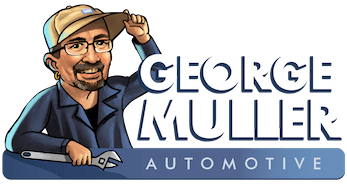“How Do I Know If I Need Transmission Repair?”
When a transmission is going out of service, your vehicle will do some of the following:
- not shift properly
- be stuck on one gear
- lack power
- harsh shifts
- if it’s an automatic vehicle, you might have delayed shifts (shifting long after it should have based on your speed)
- the check engine light may turn on
- if there’s a problem with the final drive, you may lose power to all of your gears (such a failure would require transmission removal and tear-down for inspection and repair)
Many transmission problems are not a complete failure of the transmission. Today’s electronic automatic transmissions rely heavily on electronic components for shifting, and control. Any one sensor can cause your transmission to shift improperly.
Most transmissions that have an electronic failure default to one forward gear. This means that it will no longer shift, but will be stuck in 2nd, or 3rd gear. Manufacturers put this fail-safe in place to keep you from being stranded.
Sometimes the transmission can shift funny, but it’s not the transmissions fault. Sometimes the engine or computer is acting up, or another electrical component, causing your car to shift improperly, even though the problem is not due to a transmission failure. It’s important to get it properly diagnosed, because sometimes it can be an easy inexpensive fix if you’re proactive (electronic failures CAN turn into transmission failure).
You don’t want to wait too long to find out what the problem is (especially on automatic transmissions) because the cost of a new transmission is high and can really hurt your wallet. Don’t wait!
Article: How To Keep Your Transmission Well Maintained
“Should I Replace My Old Transmission, Or Fix It?”
Many transmissions can be repaired, unless they’re too badly damaged.
An average automatic transmission costs between $1500-4500 just for the transmission. Manual transmissions can sometimes be as much, if not more money than their automatic counterparts. I’ve had to spend upwards of $10,000 on transmissions for large trucks, but that is not the average vehicle.
Often I’ll try to locate a good used transmission so I can keep your costs down. That’s an option we would discuss in person, on a case-by-case basis.
Some of my customers choose to go pick-a-part or another auto wrecker so that they can locate their own transmission in order to keep costs even lower. You can do this if you like.
Whether or not you replace your transmission completely has to do with the extent of the damage. Sometimes a transmission can be so badly damaged, that the labour costs to fix it far surpass the cost of getting a brand new or rebuilt transmission. Once again, this decision is made after diagnosis on a case-by-case basis.
Using Your Own Code Scanner To Diagnose A Transmission
If you have a code scanner, it’s important not to replace parts without an experienced diagnosis. I see people all the time who have their own scanners, an error code for “shift solenoid circuit” comes up, and they assume they need to replace that part.
A code scanner is only meant to be a guide to help you know where a failure is occurring. The code checker does not confirm which component/part is at fault, only which circuit has a failure. So replacing that specific part may not fix the issue.
That’s why it’s important to understand how to use a code scanner properly.
Many of the scanners in the $50-150 range merely identify the code with a short description. They don’t properly assist in diagnosing the fault. The $400+ scanners that I use give much more data, and graph the various electronic parts to assist in diagnosing your vehicle’s problem.
